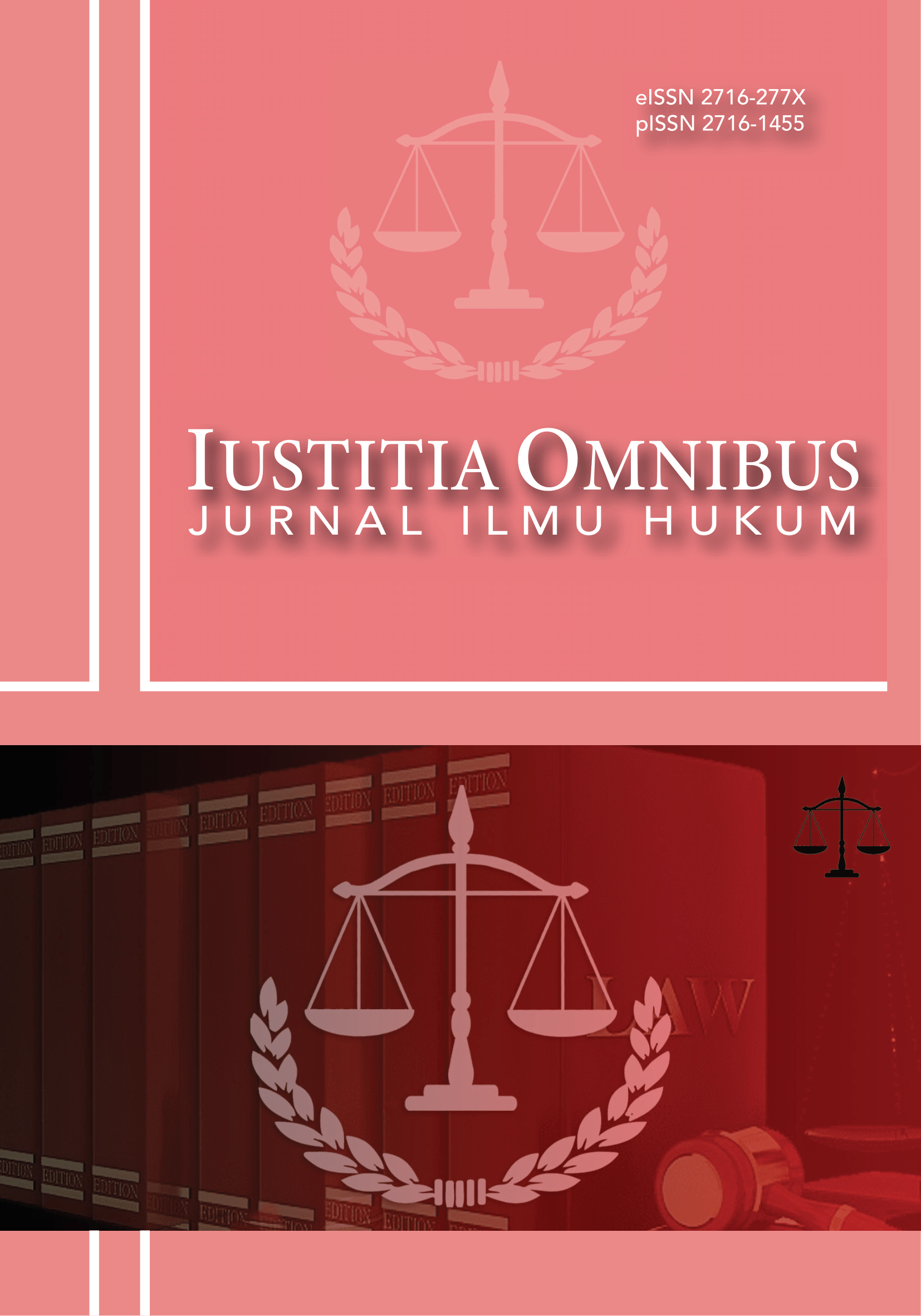TINDAK PIDANA TERORISME MELALUI MEDIA ELEKTRONIK DIHUBUNGKAN DENGAN UNDANG-UNDANG NOMOR 19 TAHUN 2016 TENTANG ITE
Keywords:
Terrorism; Electronic Media; ITE; CriminalAbstract
The aim of the research is to determine and analyze forms of criminal acts of terrorism through electronic media. To find out and analyze law enforcement regarding criminal acts of terrorism through electronic media. Normative juridical approach method, namely establishing certain normative standards for a phenomenon by examining secondary data and discussing criminal acts of terrorism through electronic media in connection with Law Number 19 of 2016 concerning Information and Electronic Transactions. Meanwhile, data analysis uses qualitative juridical methods, namely sourced from literature and field studies, then arranged systematically, after analysis it is presented descriptively. The crime of terrorism through electronic media is using social media such as Facebook, WhatsApp, video and computers as a tool by creating a homepage which is used as a means of propaganda, recruitment, collecting data/information from the private sector or confidential data and establishing relations with other terrorist groups, and all activities use encryption. As a recipient or means of evidence; by finding data on a computer that is used as evidence of a criminal act of terrorism that has been or is being planned, this is done by decrypting the encrypted documents (files) on the perpetrator's computer. Target, in this case the perpetrator of the crime carries out consolidation and coordination in carrying out the target of his terror act, for example in the case of the laptop belonging to the perpetrator of the Bali bombing crime after it was decrypted, it was proven that the internet was used to coordinate the act of terror and its target. Law Enforcement of Criminal Acts of Terrorism Through Electronic Media is carried out using Law no. 5 of 2018 concerning Eradication of Criminal Acts of Terrorism and Law no. 19 of 2016 concerning Information and Electronic Transactions.
Downloads
References
Abdul Wahid, et.al, Kejahatan Terorisme Perspektif Agama, HAM dan Hukum, Bandung, Refika Aditama, 2014
Arsyad Mbai, “Terorisme dan Penanggulangannya”, Makalah Online, 2003, , diunduh tanggal [03/02/2022.
Badan Pusat Statistik, Perkiraan , diakses tanggal 09/03/2022.
David I. Bainbridge dalam Niniek Suparni (ed), Cyberspace: Problematika dan Antisipasi Pengaturannya, Jakarta, Sinar Grafika, 2019
Endang Saefullah Wiradipraja, Penuntun Praktis Metode Penelitian dan Penulisan Karya Ilmiah Hukum, Bandung, 2015
Iqbal, Mohammad. "Defining Cyberterrorism, 22 J. Marshall J. Computer & Info. L. 397 (2004)." UIC John Marshall Journal of Information Technology & Privacy Law 22.2 (2004): 2.
Sarah Gordon dan Richard Ford, “Cyberterrorism?”, (tanpa tahun), diaks es tanggal 11/03/2022
Undang-Undang Dasar Negara RI Tahun 1945 hasil Amandemen instruments.shtml> diakses tanggal 05/03/2022
www.mahkamahagung.co.id/diakses 20 Oktober 2022
Undang-Undang Nomor 5 Tahun 2018 tentang Pemberantasan Tindak Pidana Terorisme.
Undang-Undang Nomor 19 Tahun 2016 tentang Informasi dan Transaksi Elektronik
United Nations Action to Counter Terrorism, “International Legal Instrument”, <http://www.un.org/en/terrorism/
Downloads
Published
Issue
Section
License
Copyright (c) 2024 Iustitia Omnibus: Jurnal Ilmu Hukum

This work is licensed under a Creative Commons Attribution-NonCommercial-ShareAlike 4.0 International License.














